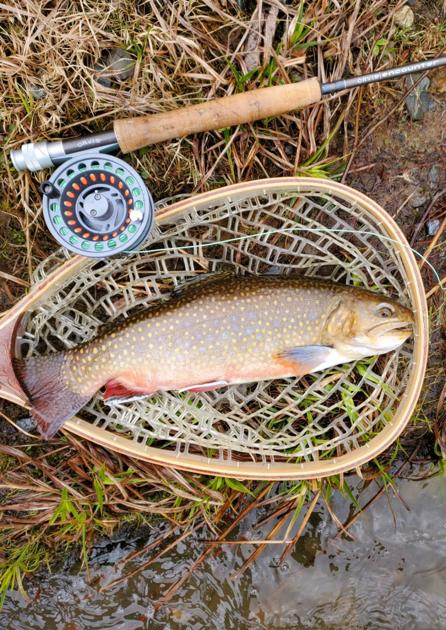YESTERDAY was the Free Fishing Day in New Hampshire. Twice annually, the NH Fish and Game Department allows a resident of any age to fish without a license.
A good business model, this event exposes the sport to beginners and ultimately fosters a lifelong interest.
Angling opportunities in June are at their best in the Granite State as any number of species can be pursued and caught with some regularity. Water temperatures are warm, flows are high and food sources for fish are becoming abundant. With the exception of black flies and mosquitoes, everything in nature seems to align for great fishing.
My favorite fish to catch in June is the brook trout, which, for me, symbolizes everything that fly fishing in New England should be. The behavior and biology of New Hampshire’s state fish have been the focus of my ambition for most of my life and, after having caught thousands of them, I still marvel at their beauty.
The existence of trout is one of cold, clean water and natural yet fragile habitat components.
Members of a larger family of fish known as char, brook trout are some of the most beautiful with colors that range from deep red to bright green and snow-white accents on their fins. In the spring and again during fall, they move great distances to find the desired conditions for their complicated lifecycle.
On Free Fishing Day, it is not uncommon for trout fishermen to pursue brook trout in one of our many designated trout ponds. These waterbodies are closed to ice fishing and stocked heavily in the spring. Early-season results can be awesome as small boats cruise slowly throughout a pond and cast or troll for hungry fish. The bait that anglers choose are varied and include lures, flies and worms.
Another approach for brook trout includes looking for those that exist in small, cold streams. The fish that live in these conditions are often not stocked, smaller and more difficult to catch. Where a one-year-old hatchery trout might be 10 inches long, backcountry tout grow much slower. It becomes important to adjust one’s idea of what constitutes a “trophy fish” as these fish have often endured harsh conditions for several years and deserve special recognition.
Another popular method of trout fishing is the use of float tubes or small canoes on remote ponds. These waterbodies are inaccessible by vehicle and combine the sports of hiking and fishing to culminate in a true outdoor adventure. Often stocked by helicopter, the trout in these ponds grow two or three years before reaching catchable size. This time allows for beautiful coloration and natural instinct to develop into a remarkable fish.
My preferred approach for June brook trout is wading into our large rivers like the Connecticut and Androscoggin of Coos County. In the early season, it becomes important to recognize the natural food sources that exist and genuinely “match the hatch.” There are no large insects and terrestrials (those bugs that live on land) are nowhere near the river yet. Instead, it is most effective to cast streamers that resemble the small but abundant baitfish that make up a large part of a fish’s diet.
Brook trout fishing in June has been a favorite adventure of mine for many years. There are many different ways to approach this unique fish. I have tried them all with varying levels of success and enjoy every one.
Credit: Source link































